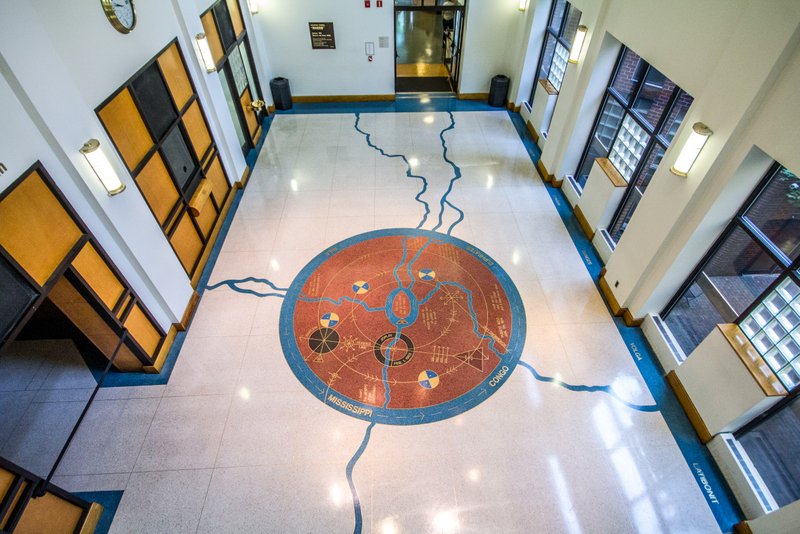The Department of the Interior announced on Wednesday two new national historic landmarks for New York State (out of 24 total), including one in New York City: the Schomburg Center for Research in Black Culture in Harlem, a research unit of the New York Public Library. The Schomburg Center was first opened as the Division of Negro Literature, History and Prints in 1925 as special subcollection of the 135th Street Branch Library. The center is named for Arturo Alfonso Schomburg, a Black scholar born in Puerto Rico, who donated his extensive archive to the division in 1926 and served as the curator from 1932 until 1938, when he passed away. The Schomburg Center was expanded in 1991 and has been undergoing a $22 million expansion that will be complete this year.
 Interior of the Schomburg Center for Research in Black Culture. Image courtesy Schomburg Center for Research in Black Culture/NYPL.
Interior of the Schomburg Center for Research in Black Culture. Image courtesy Schomburg Center for Research in Black Culture/NYPL.
The National Historic Landmarks program is administered by the National Parks Service to recognize “historic properties of exceptional value to the nation and promotes the preservation efforts of federal, state, and local agencies and Native American tribes, as well as those of private organizations and individuals.” According to the Department of the Interior, the Schomburg Center
“represents the idea of the African Diaspora, a revolutionizing model for studying the history and culture of people of African descent that used a global, transnational perspective. The idea and the person who promoted it, Arthur (Arturo) Alfonso Schomburg (1874-1938), an Afro-Latino immigrant and self-taught bibliophile, reflect the multicultural experience of America and the ideals that all Americans should have intellectual freedom and social equality.”
Another new national landmark for New York State is the 525-mile New York State Barge Canal system, which includes the Erie, Oswego, Champlain and Cayuga-Seneca canals.
“this massive early-twentieth century enlargement of New York’s canal system was an embodiment of a Progressive Era emphasis on public works. The New York State Barge Canal was built explicitly to counter the growing monopoly of railroad corporations over the American economy. The spine of the canal is a direct descendant of the Erie Canal, which opened the interior of North America to settlement and commercial agriculture, transforming the Atlantic economy.”
 Red Hook Grain Terminal, part of the Erie Canal system
Red Hook Grain Terminal, part of the Erie Canal system
Unbeknownst to many, there are many traces of the Erie Canal that can still be seen in New York City, including the Red Hook Grain Terminal and Atlantic Basin. U.S. Senator Kirsten Gillibrand pushed for the designation and announced in a press release that the “The New York State Barge Canal has played a pivotal role in the growth and development of not only New York State but the entire country. It facilitated and shaped the course of settlement in the Northeast, Midwest and Great Plains, and established New York City as the nation’s premiere seaport and commercial center.” It is hoped that the designation will promote additional tourism upstate.
One last landmark on this latest addition is not currently in New York City but was originally constructed for the New York City Episcopal church in 1846-1847. The Davis-Ferris Organ, considered an “example of the technical and mechanical achievements in the pre-Civil War American organ-building industry,” was sold to the Round Lake Camp Meeting forty years after and used in Methodist summer retreats. Round Lake is located north of Albany and Schenectady.
Check out the full list of new landmarks here. Next, discover 10 traces of the Erie Canal in NYC.





